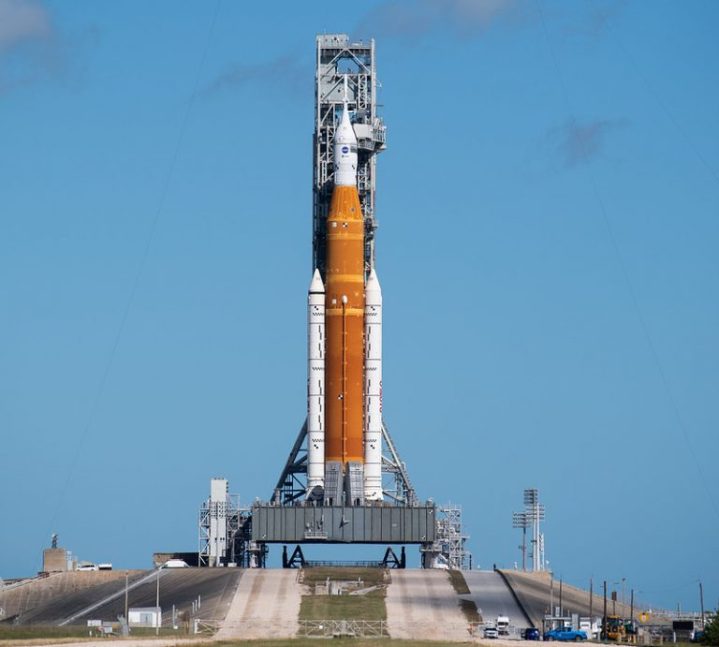NASA has announced that the Space Launch System rocket is still set to be launched for the Artemis I mission this week, despite suffering “very minor damage” during Hurricane Nicole.
The rocket was out on the launchpad at Kennedy Space Center in Florida when the hurricane struck last week, as rolling it back inside its building was deemed to be too risky. During a previous launch attempt which was stymied by Hurricane Ian, the rocket was returned to its building, but this time it was decided it would be safer left where it was.

Now, NASA teams have checked over the rocket, the Orion spacecraft, and the mobile launcher to check they are still ready for launch as planned on Wednesday, November 16, and the agency has announced it is intended to go ahead with the launch.
“Space Launch System engineers have performed detailed analysis to confirm the sustained and peak winds experienced during the storm have no adverse effect on the structural strength of the rocket,” NASA wrote in an update. “While varying peak winds were measured by sensors at different heights at the pad, all measurements remained below 75% of SLS design limits, which also are intentionally conservative. Data from testing with actual hardware during the structural test series and modal testing, as well as other evaluations and modeling, provide confidence there is margin beyond the design ratings.”
There had been concerns that the high winds might have caused damage, but NASA says the issues being fixed are minor, such as loose caulk and weather coverings. A hard cover that had been added over the emergency ejection system of the Orion spacecraft to protect it during the hurricane was removed and the window will be inspected.
The teams are also powering on the rocket systems as part of launch preparations to check everything is working as expected, in testing which is expected to run through today, Saturday, November 12. A review of launch preparations will happen tomorrow, Sunday, November 13.
Editors' Recommendations
- NASA’s Artemis moon astronauts suit up for mission practice run
- NASA performs critical tests for Artemis V moon rocket
- NASA confirms success of Artemis I moon mission
- NASA shares new footage in Artemis I mission highlights reel
- NASA releases stunning hi-res moon images from Orion flyby




